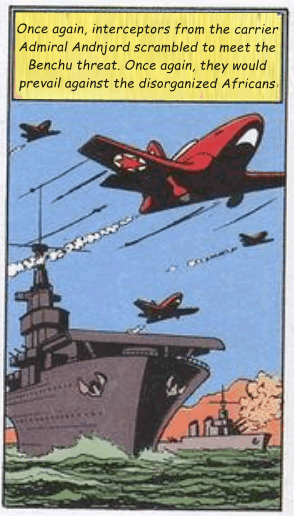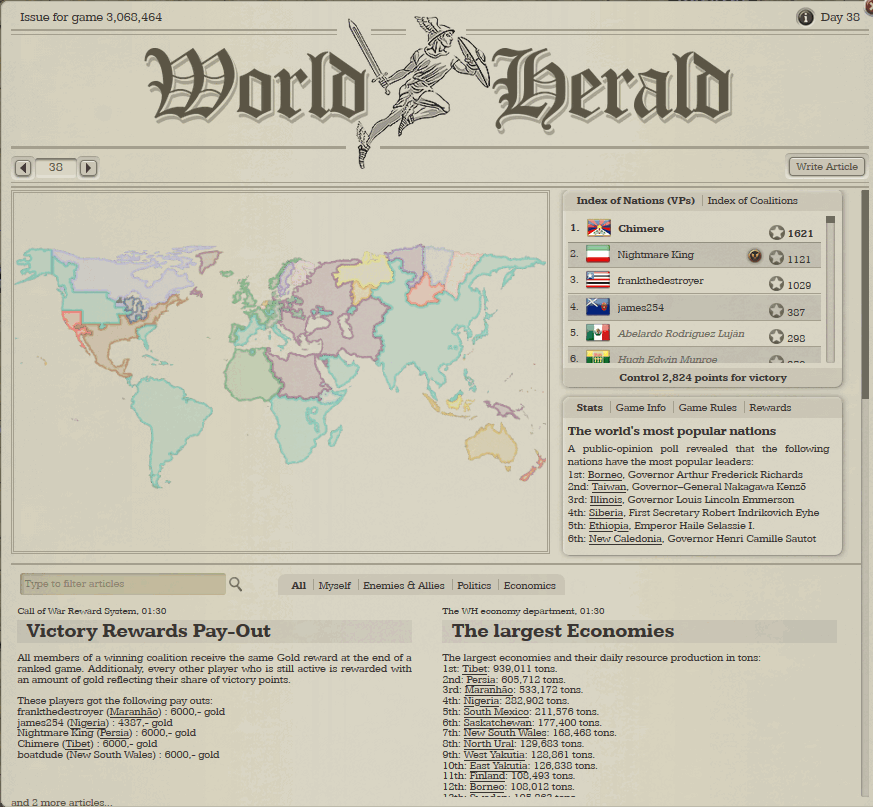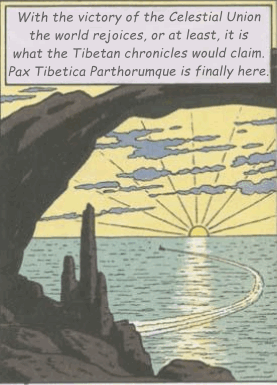ValeVelKal
Arcane
- Joined
- Aug 24, 2011
- Messages
- 1,606

Day 27 - Battle in the Steppes
If you remember, on Day 26, a massive Rhodesian army had moved through Germany and started to penetrate in Persian-held Romanian :

That army would spend the night around Iasi, and would resume its march toward the East and by the end of day 26th, had reached Iasi :

Some isolated elements of the Rhodesian force, Light Tanks mostly, had been detached and seized territories more in the North.
Against this threat, the Tibetans and the Persians had agreed to merge their respective force in Stalingrad ; it was tearjerjing for the Persians at it meant retreat and leaving to the enemy a significant number of valuable industrialized territories.
Meanwhile, the Tibetan air force managed to arrive quickly on the theater, and though unable to attack the main force (an unique attempt ended with significant air losses), the raider groups were destroyed :

The local air superiority of Tibet and Persia meant that now the enemy was unable to detach any force from their main battle group. This allowed the Celestial Union was able to commit some light forces (Tibetan armored cars and Persian light tanks) to retake the lost territory "behind" the Rhodesian force, which was in this way quickly isolated in the middle of Ukraine.
Finally, on the fateful 27th day at 19H30, the Rhodesian force approached Stalingrad. The plan was simple :

- By then, the Tibetans and the Persians had already relocated from Stalingrad to Stravropol, the plains South of Stalingrad. Armors in cities can be wrecked by artillery outside the city, so while Stalingrad was a good place to regroup, it was not one to fight.
- From Stavropol, the combined Union force would wait to the enemy to engage in the hilly province to the North - Salsk. The hilly terrain means the enemy armor and artillery would fight with no special advantage...
- While the enemy would move from Stavropol, the Persians would move to Salsk to lock the enemy in close combat
- Once locked into close combat, the enemy would be an easy prey for the combined Celestial Union Artillery shooting from the plains of Stavropol [plans = +50% bonus]
The organisation of the concentration in Stavropol was a bit more complicated than expected due to several changes in rendez-vous point and... "events" surrounding [AI] Volga Perm attacks in Russia and more critically along the Tibetan reinforcement route. Due to this, the concentration of Tibet not being quite complete yet, but it was good enough and the Rhodesians were outnumbered 2:1 and even 3:1.

At around 22:00, the Rhodesians were in Salsk, advancing toward Stavropol now, and the Persians advanced to them, planning to lock them into combat as planned. Unfortunately, they were spotted at the last moment by the Rhodesian, who split their forces :
- A force at the front was composed of 10 infantry regiments and the 8 tank destroyer batteries.
- The rest, including artillery and air force, was left behind to provide long distance support.
For the Rhodesians, this only converted an unmitigated disaster into a mitigated disaster.
If the Persians had been left to spearhead the attack rather than the Tibetans, it is because their army was of lower quality overall : it was composed in a large part of motorized infantry and of other unarmored elements (against which the Tank Destroyers were useless) and even the armors were mostly deprecated armored cars or light tanks that Persia was willing to lose. On the other hand, the Persian and Tibetan artillery outnumbered the Rhodesian artillery, and they could shell the "front force" with impunity and with a favorable position.

Meanwhile, a Tibetan mechanized infantry force was tasked with cutting the only possible retreat route for the Rhodesian artillery. Not that the Rhodesians could really retreat, they were too slow [units in a province they don't control move at 50% of the normal speed, and since Persia and Tibet recovered all the provinces just behind the Rhodesians...] and furthermore if they moved away from the tank destroyers & infantry those would not be supported by AA any more and thus would be immediately destroyed from air.
Three hours later, the front force was gone, and the Persians and Tibetans engaged the supporting force. By the morning of the 28th, the Daila Lama noticed with satisfaction that there were no more Rhodesians in Ukraine.
The Rhodesians had lost their elite force of 50 armored units + 12 infantry, and for that price had only destroyed between maybe 25 units, 15 of which of questionable value (mostly obsolete Persian Light Tanks or relatively cheap motorized infantry). The Tibetans had lost at worst 3 units. What the Celestial Union did not know yet, too, was that this force was more than 95% of the force allocated to the attack of Europe. There was no significant enemy force left between Stalingrad and Spain.
The army ranking received the morning of day 28 showed that, again, there had been a shift in power :

Annihilated in the air and crippled on the sea, the Benchuanaland was now a secondary power, while the Rhodesians could only trust their air force to protect Africa. On the other hand, Maranhao had grown more and more powerful, and it was clear that the Celestial Union had to strike against Africa now ! The 28th, there would be a new target : Madagascar.

Meanwhile, on the diplomatic front, Tibet had been quite active. In the week prior, around day 20, the Daila Lama had sent to Australia, well, not really a diplomat, rather a sort of adventurer who managed to sign extremely interesting agreements with his partners :





25 000 oil over 4 days may seem limited, but Tibet daily production was around 30 000 barrels... and daily consumption around 27 000 barrels, for a daily surplus of only 3 000 barrels.
The rest was coming from Persia (who had given around the same amount as Australia as they had they own huge army to maintain) and from the market (where Tibet bought probably between 30 000 and 50 000 in oil at an extremely high price). Those 25 0000 oil barrels allowed Tibet to build the equivalent of around 25 plane squadrons, or around 20 BB. Said otherwise, this simple discussion with Australia ended up furnishing 20% or 25% of the Tibetan "available oil"
Tibet had also started discussions with Nigeria on day 24, when the Nigerians had contributed in stopping the Suez landing. While the initial discussion was without any of the gravitas that the Tibetan diplomats should maintain, it had been promising indeed.

Later discussion would reflect the state of mind of the Daila Lama - worried day 26 as multiple Benchu fleets are spotted and as the Rhodesian start they foray into Eastern Europe... and confident day 28 as the Benchu fleets was spotted at the bottom of the sea and as the Rhodesian foray had been anniliated.

According to the Nigerian timetable, the Celestial Union had 3 more days to make the difference. Meanwhile, Nigeria was obviously busy annexing the British Isles. As for the other independent powers, they had all fallen into anarchy. On the map, there were only 8 powers left :
- Tibet
- Persia
- Benchuanaland
- Rhodesia
- Maranhao
- Nigeria
- Amazonas, still unseen on the battlefront
- Australia
Last edited:





































































